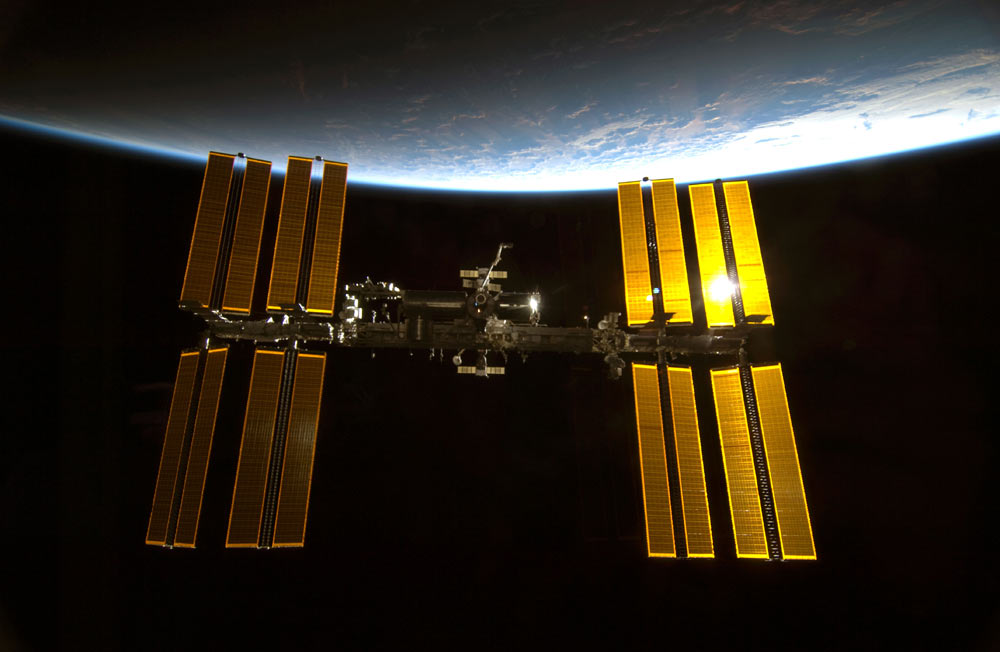Science in Space: Contest Selects Experiments Headed for Space Station

Calling all citizen scientists! The nonprofit organization that manages American-led research aboard the International Space Station announced the winners of its public contest to design experiments to send to the orbiting outpost.
The Center for the Advancement of Science in Space (CASIS) held a month-long contest, called "What Would You Send to the ISS?" to cultivate interest in the orbiting laboratory, and to solicit ideas for how to use the facility to benefit humans on Earth. The grand prize winner, Elizabeth MacDonald, proposed flying a geo-tagged video camera to the International Space Station to record real-time images of the northern and southern lights.
The aurora images could be posted on the Aurorasaurus website, a citizen science project that aims to build accurate, easy-to-use and real-time maps of aurora sightings. The images, which are also shared over social media, can also be used to improve space weather forecasting, and to better understand details of auroral behavior. [Northern Lights: Amazing Aurora Photos of 2013]
For winning the contest, MacDonald will receive $10,000 and a trip to Florida to witness the launch of her idea to the space station.
"I am very excited to have won and grateful to CASIS for this amazing opportunity," MacDonald said in a statement. "The Aurorasaurus citizen science project aims to connect observers of the northern lights in real-time using social media, allowing more people opportunities to see their extraordinary beauty. Incorporating observations from the orbiting space station will be a unique vantage point and tremendous resource for our growing community."
CASIS was selected by NASA in 2011 to manage the space station's U.S. National Laboratory. The organization is responsible for maximizing use of the onboard facilities while the space station remains operational, which NASA officials have said will be until at least 2020.
The contest was held from Aug. 19 through Sept. 16, and members of the public were invited to vote for the best ideas. Those votes were tallied with responses from the CASIS Science & Technology Advisory Board.
Get the Space.com Newsletter
Breaking space news, the latest updates on rocket launches, skywatching events and more!
In addition to awarding the grand prize to MacDonald, CASIS also selected four runners up:
Chun-Ti Chang – Testing the ‘Atomic Spectra’ Of Excited Sessile Drops
This entry suggests using microgravity to better understand movement within fluid droplets as it relates to Earth-based 3-D printing, personalized medicine and microelectronic circuits for semiconductors. Larger fluid droplets can be made in microgravity and analyzed to yield higher resolution data.
James Goodman – An ISS CubeSat Laboratory Using Arduinos and 3D Printing
This idea seeks to improve the small satellite capabilities of the ISS National Lab by on-orbit manufacturing of CubeSats. By combining 3D printing and Arduino technology (small microcontrollers used in electronics) in space, the ISS can be a manufacturing platform. This could be particularly useful for improving response to time-critical events, such as satellite imaging of natural disasters.
Khalid Marhlaoui – Materials Melting in Microgravity+Vacuum
This entry suggests improving materials science capabilities on the ISS National Lab by sending metal-melting furnace hardware to space. This could help in the analysis of existing functional materials and the discovery of new alloys for Earth applications.
Jonathan Morris – Impact of Space on Commensal Microbiota and Host Response
This entry suggests studying commensal (“healthy”) bacteria in space. Since microgravity alters the way bacteria grow and interact with each other and their human hosts, studies of these bacteria in space will inform us about human health and diseases like diabetes and Crohn’s disease on Earth.
Follow Denise Chow on Twitter @denisechow. Follow us @Spacedotcom, Facebook or Google+. Originally published on SPACE.com
Join our Space Forums to keep talking space on the latest missions, night sky and more! And if you have a news tip, correction or comment, let us know at: community@space.com.

Denise Chow is a former Space.com staff writer who then worked as assistant managing editor at Live Science before moving to NBC News as a science reporter, where she focuses on general science and climate change. She spent two years with Space.com, writing about rocket launches and covering NASA's final three space shuttle missions, before joining the Live Science team in 2013. A Canadian transplant, Denise has a bachelor's degree from the University of Toronto, and a master's degree in journalism from New York University. At NBC News, Denise covers general science and climate change.









